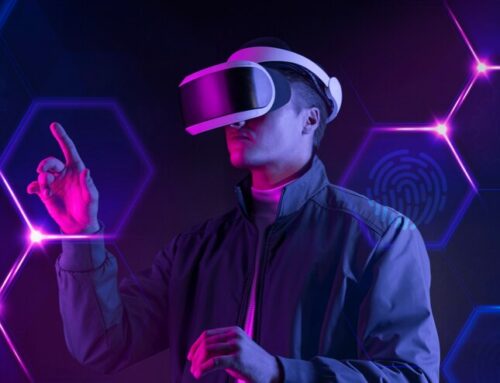Imacion is an emerging term gaining traction across various industries, combining imagery, imagination, and technology to create immersive, interactive, and innovative experiences. This concept encompasses well-known technologies like virtual reality (VR), augmented reality (AR), mixed reality (MR), and other immersive digital environments.
Imacion blends digital transformation with creative thinking, enabling the development of compelling visual experiences that deeply engage users. These experiences range from immersive marketing campaigns and virtual product showcases to advanced training simulations and interactive educational content.
The Core Components
Three key elements define Imacion:
- Imagery: High-quality visuals, graphics, and animations are central, crafted using advanced software to create lifelike and engaging content.
- Imagination: Creative thinking drives the process, pushing beyond traditional boundaries to conceptualize unique experiences.
- Technology: Utilizing VR, AR, artificial intelligence (AI), and machine learning (ML), this concept turns imaginative ideas into tangible digital experiences.
Applications Across Industries
This approach is versatile and applicable across many sectors. Here are some key areas where it is making a significant impact:
1- Marketing and Advertising
The concept transforms marketing by enabling brands to create interactive advertisements that capture attention and engage audiences. For instance, augmented reality allows customers to visualize products in their space before purchasing, enhancing the overall buying experience.
2- Education and Training
Imacion is enhancing learning environments through virtual classrooms, interactive simulations, and 3D visualizations. Realistic simulations allow learners to practice skills safely in training, especially in fields like healthcare and aviation.
3- Entertainment and Gaming
In entertainment, this approach has revolutionized gaming, movies, and concerts by pushing the boundaries of immersion. Gaming, in particular, has benefited from creating detailed virtual worlds where players fully engage.
4- Healthcare
In healthcare, immersive simulations assist in both treatment and training. Surgeons practice procedures in virtual settings, and VR is used therapeutically to manage pain, anxiety, and phobias.
5- Real Estate and Architecture
Architects and developers use it to create 3D models and virtual tours, allowing buyers to experience properties realistically before they are built. This technology helps sell properties and assists architects in visualizing designs during the planning stages.
Key Benefits
The adoption of this approach brings numerous advantages:
- Enhanced Engagement: Immersive experiences capture and hold user attention more effectively than traditional media.
- Improved Learning and Retention: Interactive learning environments aid in better understanding and memory retention.
- Cost Efficiency: Virtual simulations reduce costs associated with physical prototypes, training, and travel, especially in manufacturing, aviation, and healthcare.
- Accessibility: Virtual tours and simulations make experiences accessible worldwide, removing geographical barriers.
- Boosted Creativity: By merging technology with imagination, this approach encourages innovation and the development of new ideas and services.
Shaping the Future
The potential of this concept grows as technology evolves. Here’s how it is shaping the future:
1- The Metaverse
A significant application is the metaverse—a fully immersive virtual world for interacting, working, and playing. The combination of technology and creativity is crucial in building these digital environments.
2- Remote Work and Collaboration
As remote work rises, virtual collaboration tools become essential. Virtual meeting rooms, 3D presentations, and interactive sessions make remote work feel more connected and productive.
3- Personalized Experiences
By integrating AI, immersive content can be tailored to individual preferences, offering personalized interactions that enhance user experiences, especially in marketing, education, and customer service.
4- Advanced Medical Training
Future medical training will benefit from more advanced virtual surgeries, remote diagnostics, and personalized VR therapy sessions, transforming healthcare.
5- Smart Cities and Urban Planning
Urban planners use virtual models to visualize the impact of new projects on existing infrastructure, optimizing space and improving urban living conditions.
Challenges and Considerations
Despite its benefits, there are challenges to consider:
- High Development Costs: Creating high-quality immersive experiences requires significant investment in software, hardware, and skilled professionals.
- Technical Limitations: Hardware capabilities, internet speed, and accessibility issues can limit adoption.
- Privacy and Security: Protecting user data in immersive environments is a crucial concern, requiring strong security measures.
- Accessibility and Learning Curve: Ensuring these experiences are user-friendly and accessible is essential for widespread use, particularly for those unfamiliar with advanced technology.
Implementing This Strategy in Business
For businesses looking to adopt this approach, here are steps to consider:
- Define Your Goals: Determine what you want to achieve, whether it’s enhancing engagement, improving training, or innovating in marketing.
- Select the Right Technology: Choose technologies that align with your goals, such as AR, VR, or a combination of platforms.
- Invest in Quality Content: High-quality visuals and interactive elements are critical. Hiring skilled designers and developers can bring your vision to life.
- Test and Iterate: Start with a pilot project, gather feedback, and refine the experience before a full-scale launch.
- Focus on User Experience: Ensure the end-user experience is intuitive, engaging, and valuable, as this will drive the success of your initiative.
Conclusion
The fusion of imagery, imagination, and technology is reshaping how we interact with the digital world, offering a glimpse into a future where experiences are more engaging, interactive, and impactful. Whether enhancing customer engagement, transforming education, or innovating in healthcare, this approach unlocks new possibilities limited only by our creativity and technological capabilities.






